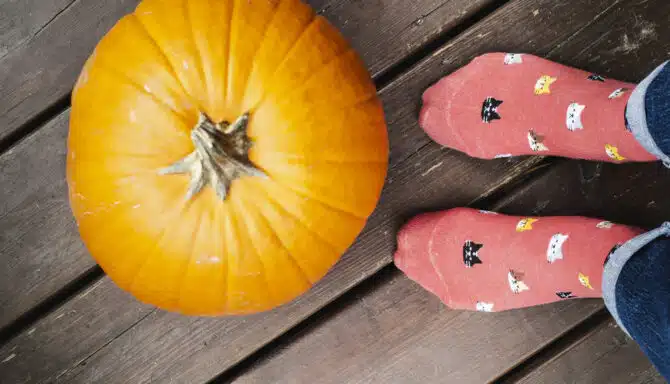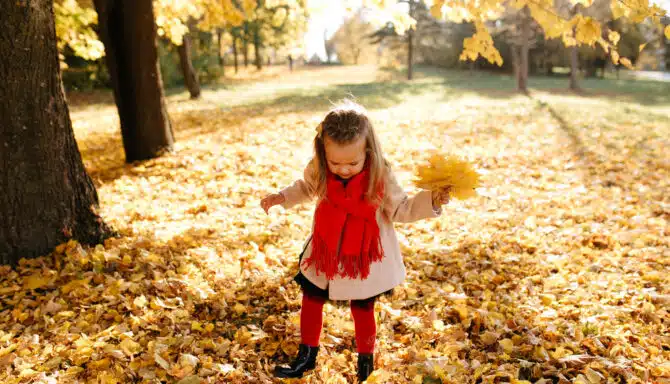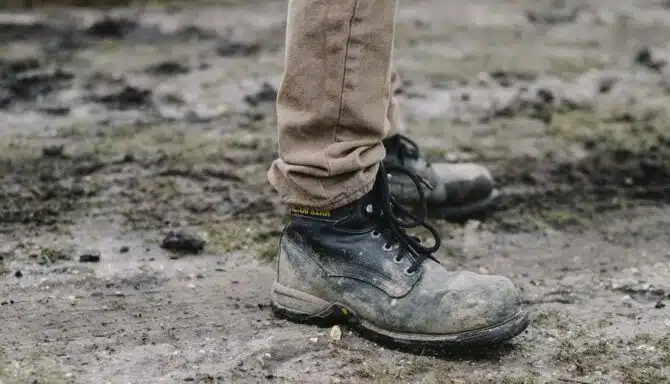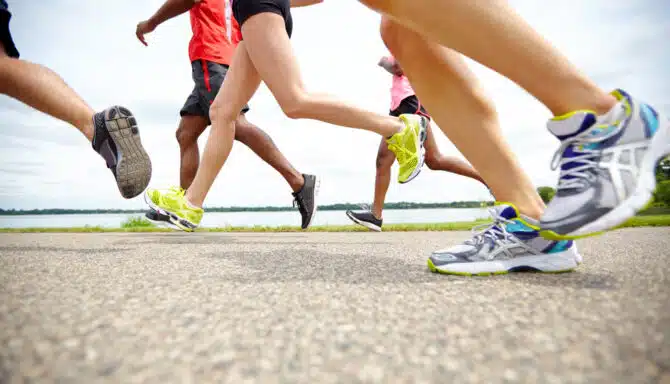October 28, 2024
Taking care of your feet during winter might require a little extra effort, but it’s essential for preventing discomfort and long-term issues. The cold weather can impact your feet in its own unique ways, just like hot weather can. Whether you’re dealing with dry, cracked skin or trying to avoid slippery conditions, being mindful of your foot health will keep you a step ahead of the cold.
5 Ways Cold and Wet Weather Can Impact Your Feet
Dry, cracked skin
Skin conditions
Reduced circulation
Stiffness and joint pain
Winter-related foot conditions
1. Dry, Cracked Skin
https://www.youtube.com/watch?v=1-Sf43woLLE
One of the first things you may notice during the winter is dry, cracked skin on your feet, especially your heels.
The chilly air and low humidity can quickly sap the moisture from your skin, leaving your feet feeling rough and sore. Heating indoors doesn’t help either, as it dries out the air, exacerbating the issue.
This is where cold weather foot care enters the picture! Since cracked skin can cause pain and even bleed, it becomes essential to protect your feet. This dryness isn’t just unsightly—if the cracks open up, it creates an easy pathway for infections. This can lead to debilitating pain and bleeding that makes walking difficult.
Regular moisturizing with a medical-grade foot cream is a straightforward way to combat dry feet and cracked heels. Look for products that contains a high urea concentration, which will help your skin replenish and retain lost moisture. It's important to use a foot cream instead of a regular moisturizer for your feet because the skin on your feet is thicker than the skin elsewhere on our body. Therefore, a regular body or facial moisturizer won't cut it - especially during the dry, colder months.
While you're at it, take your hydration to the next level by always remembering to drink your eight glasses of water per day. This advice still holds up today!
2. Reduced Circulation
Cold weather can mess with your blood flow, which can pose a problematic obstacle for foot health. When temperatures drop, blood vessels constrict to preserve heat, meaning less blood flows to your extremities. This is called vasoconstriction.
As a result, your feet may feel cold, numb, or even tingly. Poor circulation can also lead to prolonged healing times for cuts or blisters. This is concerning for diabetes patients with neuropathy who are already struggling with wound healing issues. That's why cold weather diabetic foot care should always include steps to monitor and improve blood flow— including daily foot inspections and easy foot exercises.
Wearing thermal socks and ensuring your feet are properly insulated can help combat the impact of reduced circulation. Just make sure your thermal socks fit comfortably with your fall and winter footwear: if your shoes or boots are too tight, it will reduce circulation and make your feet more susceptible to cold-weather complications (more on that below).
If you experience slippery conditions during winter, circulation issues can also increase your risk of falling or slipping. When your feet are numb, it’s harder to get a good sense of balance, so be cautious and wear shoes with good grip for FALL prevention.
Moving around can also help keep your blood flowing. So, if you’re out and about, take small breaks to wiggle your toes and stretch to maintain circulation. There are even targeted foot exercises you can try to help trigger healthy blood flow. In fact, you should do these more often in the winter than the summer.
3. Skin Conditions
https://www.youtube.com/shorts/xZ4RQwPmCzg
It might seem strange to consider blisters a winter problem, but they can definitely crop up due to cold weather foot care challenges.
Wearing heavy boots and thick socks can cause friction, leading to blisters on your heels or toes. This is why it’s extremely important for boots to fit snugly, but not be too tight. So if the socks you like to wear in the winter are causing your boots to constrict your feet, they don’t fit!
And if your feet are already dry, cracked, or dealing with reduced circulation, they’re even more susceptible to developing painful blisters. Combat this by ensuring your boots and sock combo always fit perfectly together, and opt for moisture wicking socks to go the extra mile.
Another common winter foot problem is athlete's foot. Though often associated with the hot summer months and public swimming pools, athlete's foot is no stranger to winter either. Athlete's foot thrives in wet, damp areas, so instead of crowded public summer pools, fungal infections change their habitat to the wet-from-the-snow environment inside your boots. And keep in mind, you can get athlete’s foot simply by coming into contact with someone who already has it.
When you’re tackling wet feet, whether it’s from snow or rain, you need to dry them thoroughly before putting on warm socks. Athlete’s foot loves moist environments, so making sure your feet are dry is key. If you start to notice itchy or peeling skin between your toes, it’s a sign that athlete's foot might be setting in. Treat it promptly with your Toronto chiropodist, who can provide the right antifungal products. Make sure you also keep your feet clean and dry and avoid sharing shoes and socks to protect your feet from a future infection.
4. Stiffness and Joint Pain
https://www.youtube.com/shorts/n46k32OZgco
Cold weather tightens your muscles, which in turn can lead to stiff joints. This discomfort can be particularly noticeable if you already have arthritis or any other joint-related issues. Without the right cold weather foot care, your feet can end up feeling stiff, which can affect your overall mobility. To help counteract this, regular stretching and low-impact exercises, such as foot rotations, can keep your joints limber.
This season also requires some extra attention to footwear. Choose shoes with ample support to keep your feet cushioned against the impact of walking on hard, cold surfaces. Slippery conditions can further aggravate joint pain because your body works overtime to stay balanced, putting extra pressure on your feet. Adding orthotics or insoles that provide added arch support can also reduce some of this strain and make your steps feel more cushioned and less jarring.
5. Winter Related Foot Conditions
Winter brings its own set of unique foot problems, including chilblains, frostbite, and Raynaud’s disease, all of which can make cold weather foot care a bit trickier.
Chilblains occur when your feet are exposed to cold, damp environments, causing painful, itchy red patches. This is particularly common in teenagers, or people who quickly reheat their feet after being in the cold, so it’s best to warm up slowly.
Frostbite is another concern in extreme cold, as it can severely damage your skin and tissues. Frostbite can occur more quickly than you might expect, especially if you don't protect your feet from the weather. Signs of frostbite include numbness, skin discolouration, and a hard, waxy texture. If you think you may be experiencing frostbite, it’s essential to seek medical help immediately. To prevent frostbite, be sure to layer up and wear weatherproof boots that keep your feet dry and warm.
Lastly, Raynaud’s disease can be exacerbated by cold weather. People with Raynaud’s experience an exaggerated response to cold, which restricts blood flow to the toes, leading to reduced circulation and making your feet even more vulnerable. Keeping your feet constantly warm and avoiding sudden temperature changes can help manage Raynaud’s symptoms, but if you experience persistent pain or numbness, you should consult a healthcare provider.
October 10, 2024
Toronto's summer is behind us and the warm days of sandals won’t return until next year. But fall brings its own charm and many folks are excited for a new chapter. At the same time, you may also be looking to prevent foot issues this fall in as many ways as possible, and luckily, you’ve come to the right place! For top tips on blisters and dry skin prevention, as well as how you can fight some other common fall foot problems, keep reading today’s article!
Cracked Heels
As summer’s humid air is replaced with dryness, the skin on your feet may dehydrate and over time, cracked heels can form.
One of the best fall foot care tips to prevent this is regular moisturizing. Use a nutrient-dense product like Gehwol’s Lipidro Cream, available at Toronto’s Feet First Clinic.
It helps lock in moisture and prevent further damage. Containing high-quality ingredients like avocado oil and urea, this cream helps your skin absorb water into its layers and supplies dry skin with the lipids it needs. Properties like allantoin can also soothe irritation sometimes associated with cracked heels.
Fungal Infections
You may have heard how fungal infections like athlete’s foot are easy to contract during the summertime. Public pools, shared locker rooms and showers, and other communal spaces are all summer hot spots where this foot fungus can breed. But did you know that foot fungi is still a threat in the fall?
It can thrive when people wear closed shoes for longer periods, trapping moisture and warmth. To prevent this, keep feet clean and dry, wear breathable socks, and choose shoes that allow proper ventilation. Shoes should also be waterproof to prevent extra water getting into your shoe’s environment. To find the right pair for fall, visit your local Toronto foot clinic for a shoe fitting.
While you’re at it, learn all about the best foot hygiene here!
Musculoskeletal Foot Conditions
Musculoskeletal foot conditions can flare up as the fall chill starts to bite, making each step feel a little extra uncomfortable.
Cold temperatures cause the tissues in your joints to contract, putting pressure on nerve endings and leading to more foot pain and aggravated osteoarthritis. The cold can also worsen foot conditions like plantar fasciitis and other sources of arch and heel pain.
Get ahead of this issue by wearing boots with solid insulation that traps warmth. Also, keep your feet extra cozy with warm socks — a Toronto chiropodist may even suggest a pair of compression stockings (like Sigvaris' Thermoregulating Wool or Merino Wool compression stockings).
Blisters
Autumn foot health often involves managing painful blisters. As new footwear makes its debut, a tight squeeze can slowly wreak havoc and cause discomfort.
To keep your feet happy and blisters at bay, make sure your shoes fit securely and snugly (but not tight!) to prevent excessive friction rubbing against your skin. Wear your boots with other products like moisture control socks, foot powders, blister bandages and insoles to prevent this frustrating issue.
October 3, 2024
Are you wondering how much you need to invest in your kids’ foot health this fall? Not sure what all the fuss is about over getting the best fall shoes for children? While it may seem like your child’s summer shoes can last a little while longer, it’s important to take their foot health needs seriously and make sure they're set up for the fall. We’ve crafted this parent's guide to kids’ shoes in the fall to help you out! Keep reading to learn the main reasons why proper footwear for kids is essential during this beloved season.
3 Reasons Why Fall Shoes For Children Are A Must
They support back-to-school activities
They protect feet from the elements
They provide support for growing feet
Support Back-to-School Activities
Remember the excitement of getting a new pair of athletic shoes every year before that first day of school? Well, there’s a reason your parents did that for you!
Many kids up their activity game during back-to-school season. The excitement of reuniting with friends, outdoor recess time, extracurriculars and gym class are all contributing factors to this healthy boost in physical activity. Thus, comfortable athletic shoes for children land inside the fall shoes realm.
The best shoes for kids should:
encourage proper gait patterns.
Feature cushioning for shock absorption, which reduces stress on growing bones and joints during activities like running and jumping.
Additionally, supportive footwear can prevent common foot problems such as blisters, calluses, and ankle injuries, the latter of which is a common injury for kids.
It's important to ensure shoes have a snug (but not tight!) and secure fit, breathable materials, and a durable outsole for safe performance and comfort. If your child's shoes put pressure on the side of their feet, opt for wide-width shoes.
https://youtube.com/shorts/l4PocLoFmSI?si=Mfu8cizx0Av5u3og
Protect Feet From The Elements
Shoes are always designed with seasonality in mind, and just like you need new fall boots, so do your kids.
One of the reasons is the slowly declining temperatures and damp, cold conditions. While September and early October are often pleasant weather-wise in Toronto, November can bring sudden frigid air and freezing rain. Wearing the wrong shoes in this weather may cause foot problems like chilblains, or small, itchy swellings caused by poor circulation in response to the cold. Studies show it often targets teenagers.
Additionally, shoes designed with weatherproof materials and proper ventilation help ward off blisters, bacteria and fungi.
Lastly, fall shoes for children correlate with FALL prevention. Colder weather + rain = slippery sidewalks and even black ice formation. For these, your kids need boots with a solid grip.
Provide Support For Growing Feet
Did you know that children’s bone, muscle and joint growth continues until they reach their early twenties? Child foot development is both fascinating AND fast paced, so you need to keep on top of your child’s needs and assess how much their feet have grown or changed shape when the fall season rolls around. Properly fitted shoes with arch support and cushioning are crucial during growth phases to ensure healthy foot alignment and prevent long-term issues.
Likewise, teaching good footwear habits during the foot development phase sets your child up for success! Wearing ill-fitting shoes now can lead to problems in their adult years, and may even cause deformities like bunions and hammertoes decades down the road.
Here are our top 3 tips to make sure your child's shoes fit properly:
When putting shoes on, get your kid to kick their heel back before lacing or strapping up the shoe. This puts their foot is in the proper position, with the heel in the heel cup and the arch lined up with the arch support. Then use the laces or straps to secure the foot into that position. This will ensure your kid's foot doesn't slide forward when they walk, and also allows you to properly gauge their toe room. If your kid's shoe isn't put on properly, you won't be able to determine whether it fits.
Leave about 1 cm of toe room at the end of the shoe. While it's good to leave growing room, it's important not to leave too much room. Otherwise, the shoe will slip and slide around your child's foot and not be secure. And a shoe that's not secure won't provide good support. If you see a gap at the back of the shoe or the shoe moves as your child walks, go down half a size, or make sure the shoe is put on properly (see above).
Use the laces to adjust the width and fit. If your child feels pressure on the sides, try loosening the laces. Don't pull the laces too tight. Instead, gently adjust them to the width of your child's feet. If the shoe still feels tight and there's enough room at the end of the shoe, look for a wide width shoe. Don't size up if there already is enough room at the end; you'll just end up with a long narrow shoe.
https://youtube.com/shorts/oxAg3zgX1vA?si=KiA5eysEnkt_CzCJ
August 26, 2024
As children’s foot development takes its first steps, it’s common to encounter a few bumps along the way. From in-toeing to Sever’s disease, these growing pains are part of the journey as little ones explore the world with developing feet.
The vast majority of foot issues to do with children grow out as the child ages. Some conditions are due to genetic conditions, posture, and a familial history. A Chiropodist/ Podiatrist will assess the child's feet and take a medical history. it is especially important if you find the foot issue is affecting your child's walking:
Do they stumble
Can it be painful
Can the issue change with running or walking?
Is walking or running a chore or struggle?
Let’s take a look at what foot conditions might correspond with your child’s age.
Ages 1-3: In-Toeing and Toe-Walking
Troublesome toes occurring during the “terrible twos” can be concerning. But these quirky walking patterns are totally normal developmental milestones for children's foot development. No cause for alarm or invasive treatment!
In-toeing, also known as pigeon-toeing, is when a child's feet turn inward instead of pointing straight ahead while walking. Toe walking is when a child walks on the balls of their feet with their heels off the ground. Both are very common and usually the child with grow out of both.
Tip toe walking is also reduced with encouragement of placing the heel to the ground. Child toys like walking saucers influence a child tip toeing and can even encourage it.
There is no true consensus on treatment especially for in-toeing. The child usually outgrows it. Orthotics might be helpful as well as bracing or casts. But it depends upon severity. Surgery is usually offered to older children.
Up to Ages 3-4: Flat Feet
Children around this age will have pen planus, also known as fallen arches or flat feet. This is when the entire sole of their foot contacts the ground while standing and walking. Traditional children's foot development is at play here, as arches in children's feet develop around age 6 and this is called congenital flatfeet. Acquired flatfeet is based upon activity levels, joint ligaments, footwear and living area and can be seen in adolescence. In most cases the child will grow out of it.
For ages 3-4, unless a familial history, pain/ hindering everyday activity, no treatment is generally needed for flat feet before this point. If your child’s flat feet persist as they age, in which case you may want to consider custom orthotics, stability shoes and other treatments for flat feet.
5+ Years Old: Blisters
As kids get older, gain a sense of independence and participate in more physical extracurricular activities and outdoor play, they may start to develop skin conditions on their feet. Enter: blisters. These are a pretty common condition that’s usually harmless, but can painful and bothersome for kids when they walk. Blisters form as a result of excessive friction between shoes and the foot’s skin.
Read here to learn the best ways of preventing foot problems like blisters and how to choose the right shoes for children!
Puberty and Growth Spurts: Sever’s Disease
Did you know that the concept "growing pains" in children is not what most people think it is? While kids may experience pain as they grow, the pain itself is not caused by growing.
But what can cause pain for kids going through puberty is something called Sever’s Disease, which is like a kid’s-only version of injuries like plantar fasciitis, Achille’s tendonitis and heel spurs.
Sever's disease kicks in when a growing heel gets overworked, causing inflammation. It leads to sharp heel pain, especially when kids are on the move, like during sports and playtime! Kids between 9 and 14 are the most vulnerable.
Solid foot care for kids can help offset Sever’s disease:
Try the RICE method: rest, wrapped ice, compression and elevation.
You should also buy your child supportive footwear to ease the strain on the heel.
Gel heel cups are very helpful
Gentle calf muscle stretches help with the Achilles complex
Avoiding high-impact activities can also help speed up recovery.
Kids Shoe Tips
With the large selection of shoes available it can be difficult to find the best shoes for kids. What do you look for? Here are some kids shoe tips:
https://youtube.com/shorts/oxAg3zgX1vA?si=0bkBzFqrl5z50h9J
June 27, 2024
Construction workers face challenging demands on the job site, including long hours, potential safety hazards, and variable weather conditions. There are few jobs where footwear is more important than on a construction site. Proper footwear is critical for comfort, safety, and overall health.
This blog explores how to find the best shoes for construction workers. We dive into the balance between durability, safety features, and foot health, which are vital for your job.
Durability
Construction sites are full of heavy equipment and sharp objects and tools. Hazards range from sharp objects to heavy machinery. The best shoes and boots for construction workers should be durable, made from leather or synthetic blends, and be able to withstand abrasions and falling objects. Keep your toes and feet safe with toe caps or sturdy outsoles - ideally both.
Refined safety features
Safety is a top priority on the job site. When choosing footwear, opt for models that meet or exceed industry safety standards set forth by the Canadian Centre for Occupational Safety and Health.
Features like steel or composite toe caps provide essential protection against impact and compression injuries, while puncture-resistant midsoles shield your feet from sharp objects on the ground.
Additionally, slip-resistant outsoles help prevent accidents on wet or slippery surfaces, reducing the risk of slips and falls. Refer to the CCOSH's guide for symbols, or markings, on footwear to determine which is appropriate for the job.
Comfort
Long hours spent on your feet can be grueling. It's not uncommon for construction workers to be on their feet for 10+ hours per day. Shop for shoes with adequate support through the arch and heel, and invest in removable insoles or orthotic inserts for even greater support. If you're a construction worker in Toronto, our licensed chiropodists can do a biomechanical assessment to determine the best insoles for your foot condition.
Grip and footing
The type of flooring used in the workplace influences comfort, especially on feet. Unforgiving surfaces like concrete are the least comfortable to work on—your feet and legs absorb all the impact compared to a softer surface. Further, slippery floors (whether smooth or wet) are hazardous for slips and falls. If not careful, you can be exposed to injuries like sprained ankles or broken foot bones.
Fit
Durability and safety features are effective only when your shoes fit the contours and mould of your foot. When trying construction footwear, test out the fit with the same socks and attire you'd be wearing on the job site. If you decide to purchase online, we recommend using the manufacturer's sizing guide for directions, or finding a local retailer to try the shoes on in-store.
May 16, 2024
Top-notch athletic foot health is key, especially when summer rolls around. Your activity level changes in the summer when you start spending more time outdoors pounding the pavement in the sun. To make sure your feet don't hold you back from your summer plans, here are our top summer sports foot care tips for healthy feet.
Preventing Summer Sports Injuries in Athletes
When it comes to foot care and sports, the right footwear and healthy exercises/stretches are always a winning combo. Below you’ll find the most common strain-related summer sports injuries and what you can do to stay on your feet!
Achilles Tendonitis
Avoid straining the Achilles tendon by gradually increasing activity intensity. For example, run shorter distances while working your way up to longer journeys.
Stretch the calf muscles / Achilles tendon every day. Try the calf exercises in this article. Also make sure you stretch your soleus muscle too!
Wear runners with an elevated heel, turned-up toe and rocker soles. (Learn more about rocker soles here.)
Ankle Sprains
Wear athletic shoes with stong ankle support while playing sports like basketball and volleyball. Shoes with wider soles can help too.
If you’re prone to sprains or tend to overpronate when you walk, try stability shoes.
Strengthen your ankles with these exercises.
Stress Fractures
Stability and motion control shoes with a more rigid design and thick soles are good for runners who may be prone to stress fractures.
Gradually increase activity intensity to avoid hurting yourself, especially if you have been on hiatus!
To avoid stress fractures while strength training or weight lifting, wear a shoe with a wider toe box, a hard/thick sole and a minimum level of cushioning.
Plantar Fasciitis
Wear the best shoes for plantar fasciitis. These tend to be stability shoes, but neutral can also work. The key thing is to look for shoes with sufficient arch support.
Perform strengthening and preventative stretches that target the plantar fascia. These include calf stretches, towel stretches, and more that you can find here.
Runner’s Knee (Patellofemoral Pain Syndrome)
Prevent knee pain by strength training, paying close attention to the quadriceps and hip muscles.
Avoid shoes with a raised heel, as they can place too much pressure on the knee joint.
There should be a medium amount of cushioning in shoes; too much can cause knee instability.
Foot Care Tips for Preventing All Injuries
Footwear should always be well-fitted and supportive, regardless of what injury you're trying to prevent.
Certain features can help defend against specific injuries, but shoes must always fit properly, leaving enough room for the foot to position itself and for the toes to spread. Shoes must also always have some level cushioning and support. Lightweight shoes tend to be beneficial for athletes when competing so they can propel forward more effortlessly. Additionally, athletes should always wear running shoes with good shock absorption; it acts as a barrier between your joints and the impact from the ground.
You can also boost your protection with custom orthotics or Superfeet insoles. These offer extra support for your feet and joints.
Preventing Skin Conditions in Athletes
One of the most infamous skin issues athletes face in the summertime are blisters. Running outside in the hot sun can cause increased friction and moisture buildup in your shoe environment. Even though most blisters go away on their own, competitive runners and racers can sometimes face serious blister complications like intense pain, sepsis, and cellulitis.
Ensure your footwear fits well so your skin isn’t rubbing harshly against your shoes. To tackle the moisture problem, try sweat-wicking socks and foot deodorants, which come as sprays, powders and creams (these can also help with foot odour and athlete's foot prevention). Medical devices like custom orthotics, insoles and blister pads can also help place feet in the best position for preventing blisters.






